Things to do in Naples (beyond the best pizza in the world) and Pompeii
Text and Photos by Vanessa Costa
After going to Palermo in Sicily, I got that little desire to continue exploring Southern Italy. So, two months after a week in Palermo, I planned a four-day trip with three of my best friends to Naples.
The idea was to visit Naples, known worldwide for its history, music (who doesn’t know Sole Mio?), for being the homeland of pizza and, not to mention, the birthplace of Camorra, the Neapolitan mafia. Apart from Naples, the plan was also to go to Pompeii, an ancient Roman city, destroyed during a major eruption of Vesuvius volcano.
To stay downtown
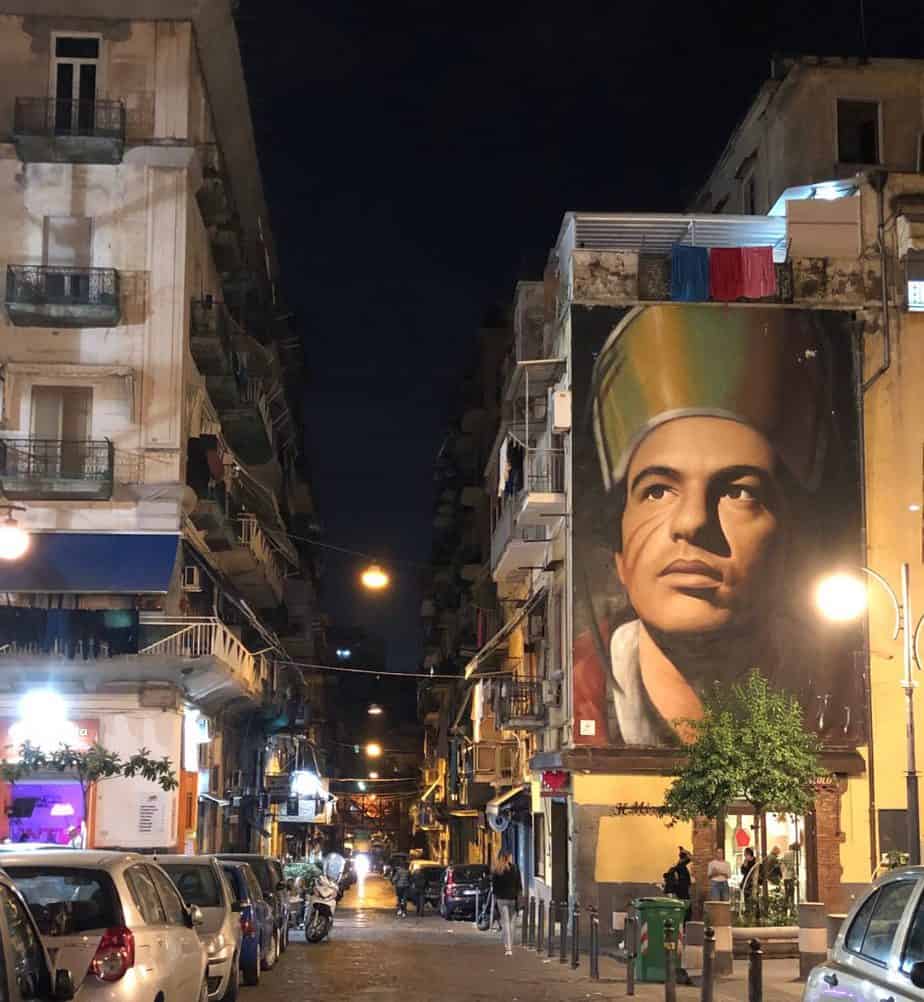
I traveled to Naples on October 25th from Barcelona, on a 2-hour flight, by Ryanair. The one-way ticket cost me 50.99€. I came back on October 29th with Vueling, and the ticket was a little cheaper, probably because it was on Tuesday: 34.99€. The adventure started on my arrival at the airport: taxi, subway and bus strike for three hours. Luckily we had already arranged, in advance, a transfer from the airport. They charged us 20€ from the airport to the city center, where we had rented an apartment.
We found the apartment where we stayed, Ale & Tize’s House, on Booking. It cost us 176€ for 4 nights for two people, ie 44€ per night, 22€ per person. The apartment was comfortable and we could reach the old city center on foot. However, walking alone in Naples sometimes can get a bit awkward.
One night, returning to the apartment with one of my friends, early in the morning, a car stopped abruptly beside us, opened the window, and accelerated again. For a moment I thought: It’s the Camorra! But they left as fast as they arrived. At that very specific moment, my friend was telling me about a book he had read: Roberto Saviano’s Gomorrah, about the Neapolitan mafia. This was the only “dangerous” episode we had in Naples though. In addition, everything is very peaceful, fun and appetizing.
To visit Europe’s largest historic center
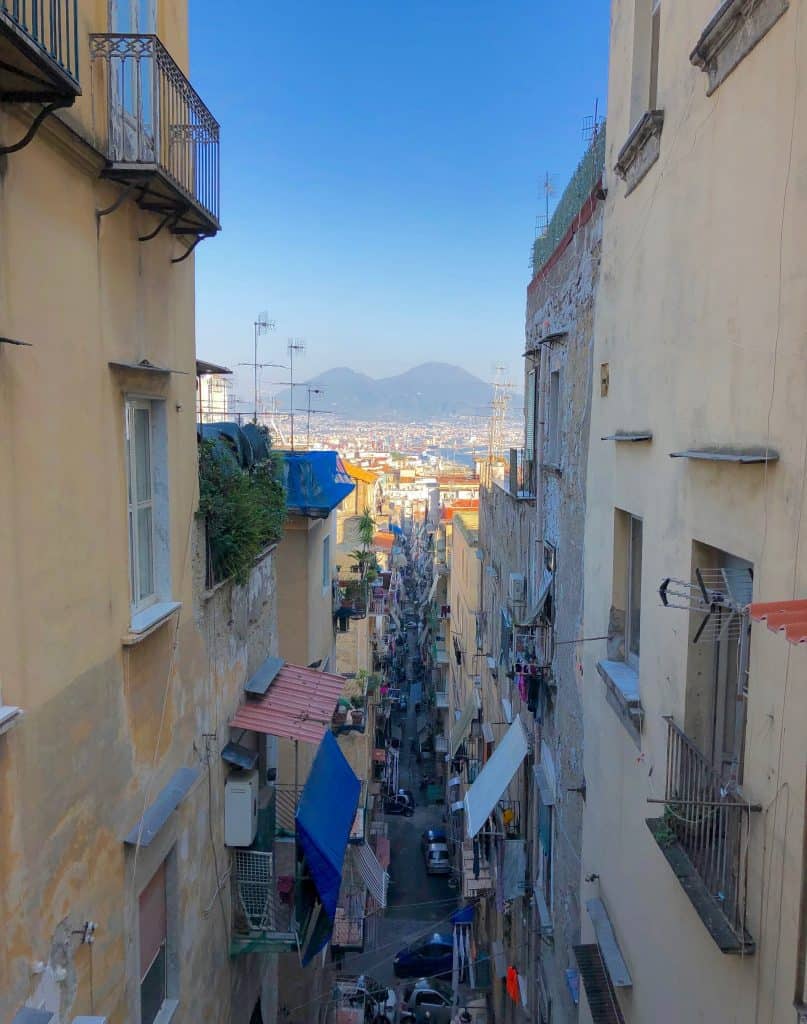
Of course, the first thing we did in Naples was to eat some pizza and then walked downtown. It was just a block later and we began to understand how Italians are so passionate about cars. We found some bike shops and strollers, mini Fiats, Mercedes and Volkswagens, on the sidewalks. It looked like a car park for the little ones, something new to me.
We kept walking, went along Via Corso, Via Duomo and got lost in the historic center of Naples: the largest one in Europe and a UNESCO World Heritage Site.
They say visiting the center of Naples is like crossing twenty centuries of history. That’s the feeling. The streets, the squares, the churches, the monuments, the public buildings and the castles mix with graffiti as well as rubbish through the streets. We got used to it quickly because the beauty of Neapolitan architecture and people’s authenticity is greater than the chaos. After a while the city seduces you. At least that’s what happened to me.
To unravel the Holy Grail mystery
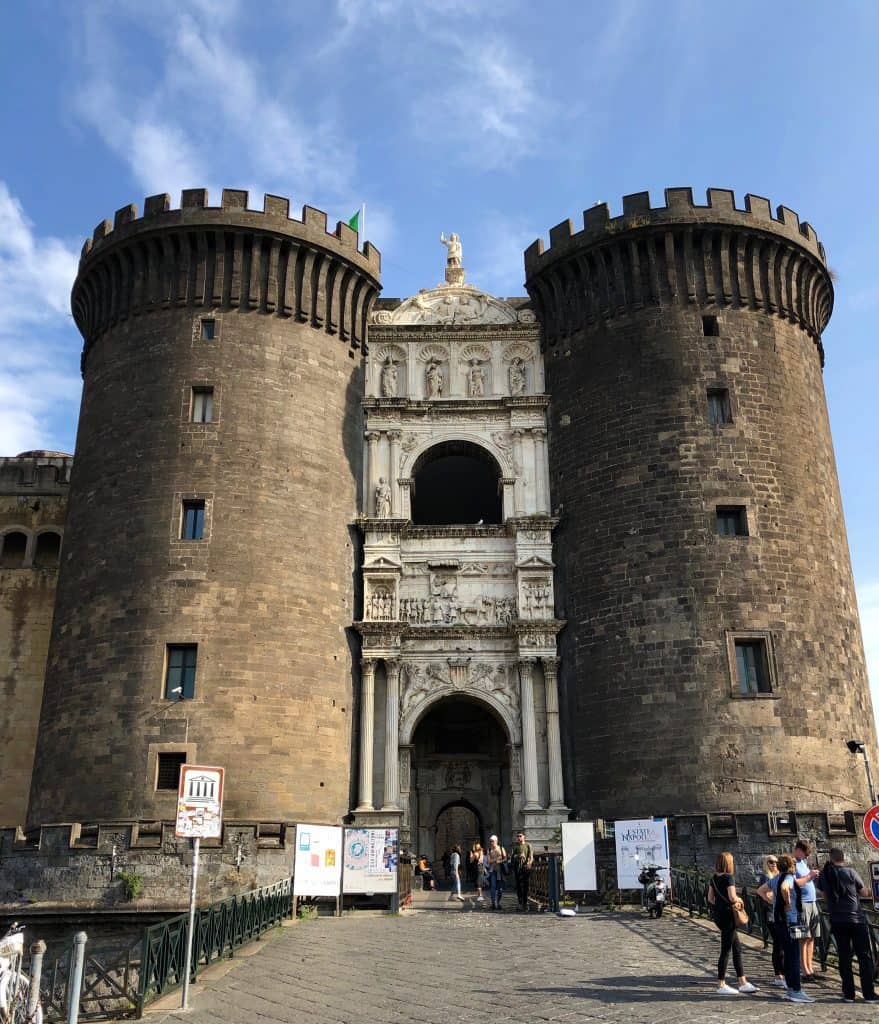
In Naples there are three castles worth visiting, but as we didn’t have much time we chose to go to the New Castle (Castelnuovo Maschio Angioino), which has this name to differentiate from the other two, older than him: Castle dell’Ovo and Castle Capan. Built in 1279, the New Castle was also a royal residence and was renovated in the 15th century when Naples was dominated by the Aragon Crown. Subsequently, it would no longer be a royal residence to become a fortress, thanks to its privileged location near the city’s port. Currently, the castle is still used as a government office.
It is worth paying 16€ for the standard ticket (or get better options, like a guided-tour ticket at Musement). Then you get in to see the castle, the civic museum, the barons’ room and enjoy the view over the harbor and the Vesuvius. What struck me most was the castle’s relation to the secrets of the Holy Grail, the Book of Light or the Book of Knowledge. In the guided tour, the guide explains every detail of history, architecture and details such as the shape of the chalice (upside down) represented on the balcony that joins the great staircase of Parthenopean Castle. I shivered…
On Midsummer Day, between 5:30 pm and 7:30 pm, during guided tours, they say that one can experience the “Book of Light” or Book of Knowledge: sunlight comes through two windows projecting a luminous rectangle on the walls of Sala dei Baroni in the shape of an open book. That’s right: a bright rectangle that draws the outline of a book, the same that appears in the coins and portraits of Alfonso de Aragón.
And the mystery does not end there. I went to visit the Cathedral of Naples, also called the Duomo di Napoli or Cathedral of San Gennaro, the city’s protector.
Built by the Anjou family in the early 14th century, the cathedral is a blend of the original Gothic, Baroque and Neo-Gothic style with over 51 silver statues, the statue of San Gennaro and, people say, some capsules with the blood of San Gennaro. Dio mio!
To have a Neapolitan pizza, an intangible cultural heritage
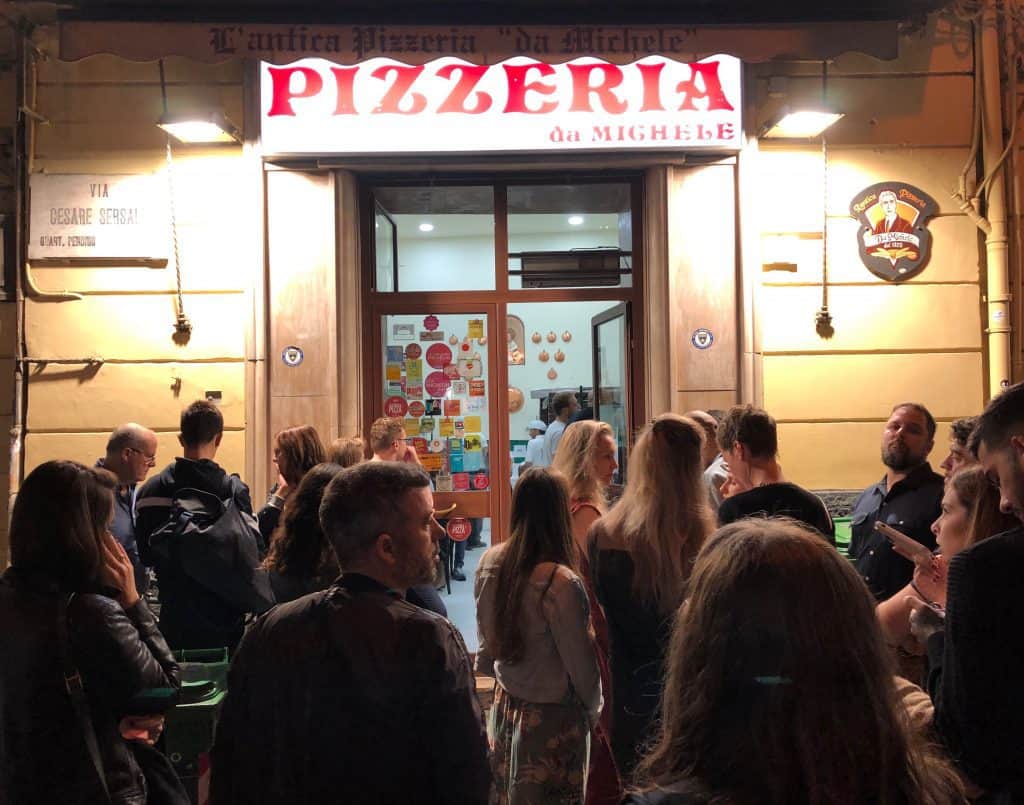
Yes, you read it right. In December 2017, Neapolitan pizza was declared an intangible cultural heritage by UNESCO.
Not only for the product, but also for the traditional art of Neapolitan pizzaiolos. The recipe seems simple: water, flour and four or five ingredients (mozzarella, tomatoes, basil and olive oil for the classic Margarita). But the art of pizzaiolos only they themselves know. Legend has it that the colors of Margarita pizza (tomato red, basil green, and mozzarella white) are also the colors of the flag of Italy.
So let’s get down to business: to eat! In the book “Eat, pray and love”, by Elizabeth Gilbert, Italy represents the eating part (India was “pray” and Bali “love”). In the film, that had Julia Roberts in Gilbert’s role, the protagonist travels around Naples, and goes to the traditional pizzeria Antica Michele, where the menu offers only two types of pizzas: margherita and marinara. This scene fuels up your appetite for sure, check it out here.
I had that scene in my mind, so we headed to Antica Michele expecting the best pizza in the world.
To start with, there is no reservation. You should go prepared to wait outside for a table. But it doesn’t take long… You can even have a cold beer on the sidewalk while you wait. No problem. And once you get in, the service is fast. Shared tables, good vibes and a pizza bigger than the plate. I thought I couldn’t eat it all, but it’s so thin and tasty, I ate it until I smeared my fingers. Delicious!
To visit Toledo station, barrio Spagnoli, galleries and lookouts
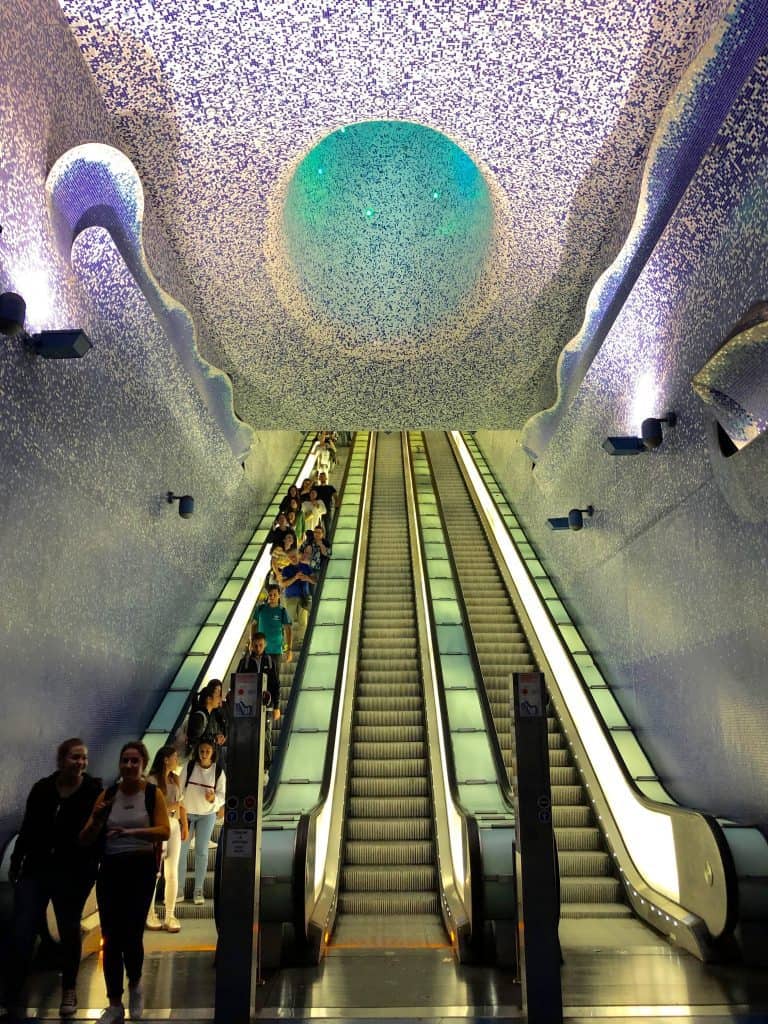
But not only by pizza lives Naples – we cannot forget the coffee. You can go into any cafeteria and order an espresso without giving it a second thought. It always comes with a glass of sparkling water and the price does not vary much: 1€. And you already have the energy to keep up with the Italians.
Take the subway and get off at Toledo Station. It is simply amazing. It’s part of a project that has won several awards, such as the International Tunneling Association, known as an Oscar for the subway stations across the world.
When you leave the station, you are already on Via Toledo, one of the city’s main avenues, full of designer shops, restaurants, ice-cream shops and two very beautiful galleries: Galeria Umberto I and Galeria Principe di Napoli.
The Spanish Quarter is next to Via Toledo. Enter one of the rising perpendicular streets and you are already in the Spanish Quarter. Lots of colors, people, motorcycles (drivers without helmets!), restaurants, an impressive vibe. Going up to the end you come to a lookout that has a beautiful view of the city. It is also possible to go by cable car, depending on the time and mood. In anyway, walk up!
To be blown away by Pompeii
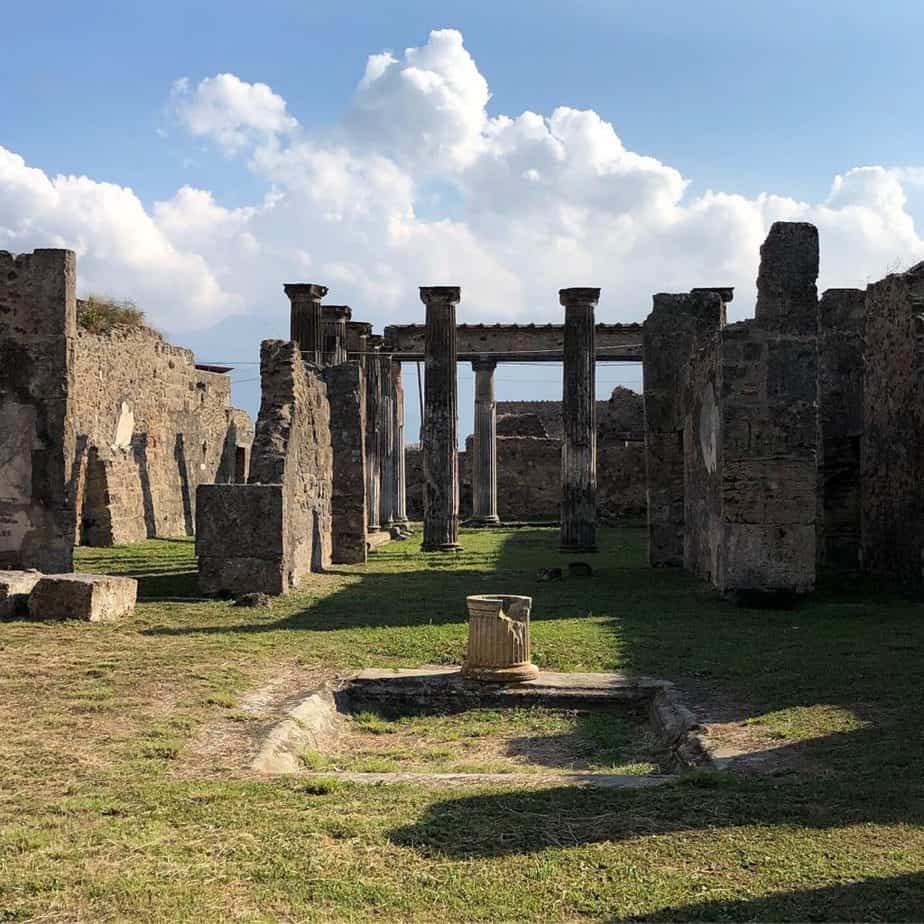
There are some quite interesting day trips from Naples, like the Reggia di Caserta palace or Pompeii. I chose to go to Pompeii on the last day. I already knew it would be an impactful visit but I confess I was a bit doubtful if going or not.
How to get to Pompeii: train, bus or car
I arrived at Piazza Garibaldi central station at 11 am and was shocked by how many people were waiting for the train. I almost gave up. But I got in and made the whole trip standing up the train, about 20 minutes.
It is also possible to go to Pompeii by bus or by car, but most commonly by train. In this case, arrive early at the station and buy your ticket beforehand.
Admission to Pompeii costs 15€ (plus 8€ with the self-guide) but this ordinary ticket is not a skip-the-line. I bought mine earlier from GetYourGuide for 19€ but you can get a skip-the-line plus guided-tour for 34€ with Musement clicking here or a simple skip-the-line ticket for 19€.
As Pompeii is such an important historic site, there are plenty of travel experiences from other cities to there or from there to other cities. Check here for 48 options of experiences related to Pompeii, from tours to wine tastings.
Another tip: eat before entering and bring a bottle of water. Inside Pompeii, there is only one restaurant and the lines are huge. I also recommend going with the self-guide. Only with a paper map, you will probably get lost and not know the whole history of the city and its residents. Pompeii is bigger than I thought, I stayed there for about 3 hours and couldn’t make it all the way.
As I walked the city streets, I wondered what that day might have been like… Vesuvius volcano erupted in August 79 AD after being inactive for over 800 years. Pompeii had a population of about 15,000 people, was a rich city and was located about 8 km away from Vesuvius. It remained hidden for 1600 years until it was found by chance in 1748. The city was then unearthed and many houses were rebuilt, such as The Faun’s House, the largest in Pompeii.
Pompeii makes us reflect on the world’s tragedies
Visiting Pompeii also reminded me of some cities of my birth land, Minas Gerais, in Brazil, that were buried by the mud of large mining companies in recent years. Mariana, Bento Rodrigues and Brumadinho were victims not of a phenomenon of nature, such as the Vesuvius volcano, but of an environmental crime. In Brumadinho almost 300 people died in January 2019. Pompeii also made me reflect on all these environmental tragedies that are currently happening in the world: fires, floods, tsunamis…
Pompeii is not a thing of the past. It is there to make us reflect on our own existence as species.

*** Vanessa Costa is a Brazilian expat living in Barcelona. She works as a brand strategist and content creator in Spain and Brazil. You can check her work here.
Book the best hotels and flights to Naples here
[tp_search_shortcodes]code_form has invalid value